This is an updated version of a post originally published on November 12th 2015.
A major expansion and remodel of Old Town’s Grove Hotel is under construction. The project will include the renovation and seismic upgrade of the existing building fronting onto W Burnside, as well as the construction of a new 99′ tall tower to replace the existing theater addition. The addition will have the lobby and main entrance to the hotel at the ground level, and a rooftop restaurant at the 9th floor. New retail spaces would be created on the ground level of the original building, and a basement level “speakeasy” will be accessed from NW 5th Ave. No new vehicular parking is proposed. The architectural design is by Portland based Surround Architecture with New York based Studio Tack acting as design consultants.
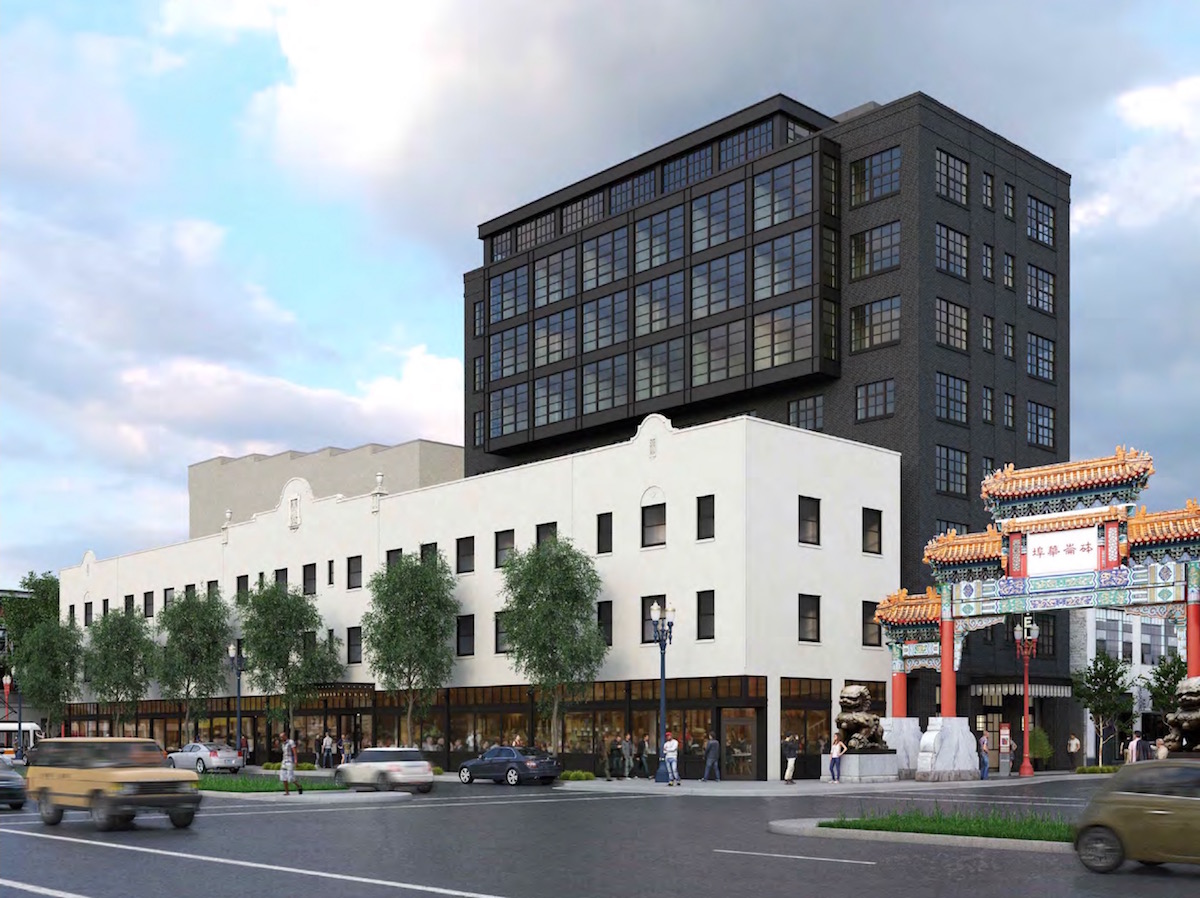
The hotel was originally built in 1906, as the Hotel Philip. A theater addition was built in 1920, facing NW 4th Ave. A fire in 1927 and the widening of W Burnside in the 1930 resulted in the removal 20′ from the front of the building, as well as the demolition of the 50′ tall fly tower on the theater. The current Mediterranean style facade seen today dates from then. Since the end of its use as a single room occupancy hotel in 2010 the Portland Development Commission has attempted to find a developer interested in renovating the building. In May of 2014 a team that includes Naito Development and Eagle Point Hotel Partners was chosen to develop the building as a boutique hotel. The existing building is not individually listed on the National Register of Historic Places, but is listed as a contributing in the New Chinatown / Japantown Historic District.
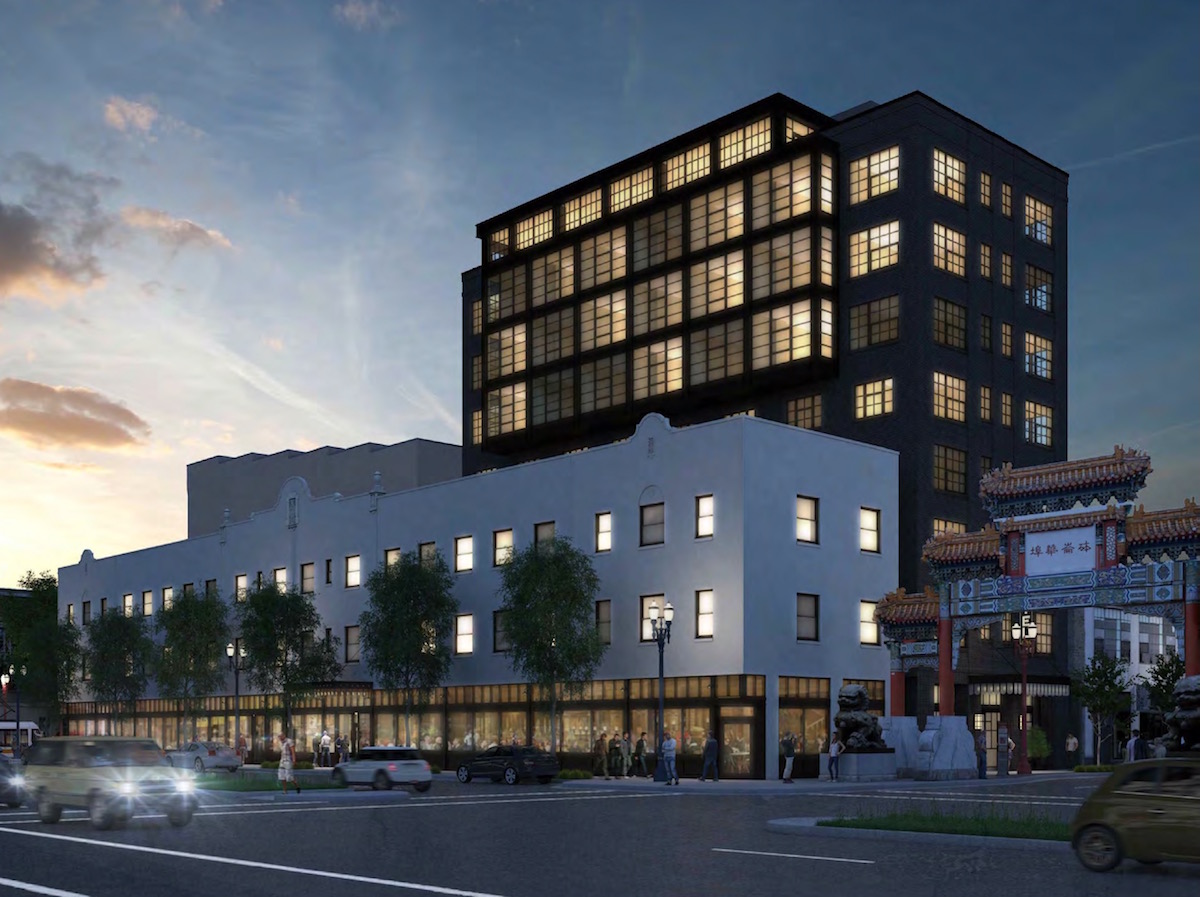
Exterior work to the existing building will include repainting the existing stucco, and replacing the existing vinyl windows—added during its last years as an SRO—with new aluminum clad wood windows. A new aluminum clad wood storefront system would be added at the ground floor, modeled after the small amount of original wood storefront that remains.
The primary material for the addition will be a dark colored brick, with dark colored stucco on the property line walls to the north and west. Metal paneling would be used on the oriel window projection, and at the 9th floor penthouse. Fiberglass windows are proposed at the upper floors. At the ground floor a steel storefront system by Hopes is proposed, with a glazing pattern inspired by East Asian designs.
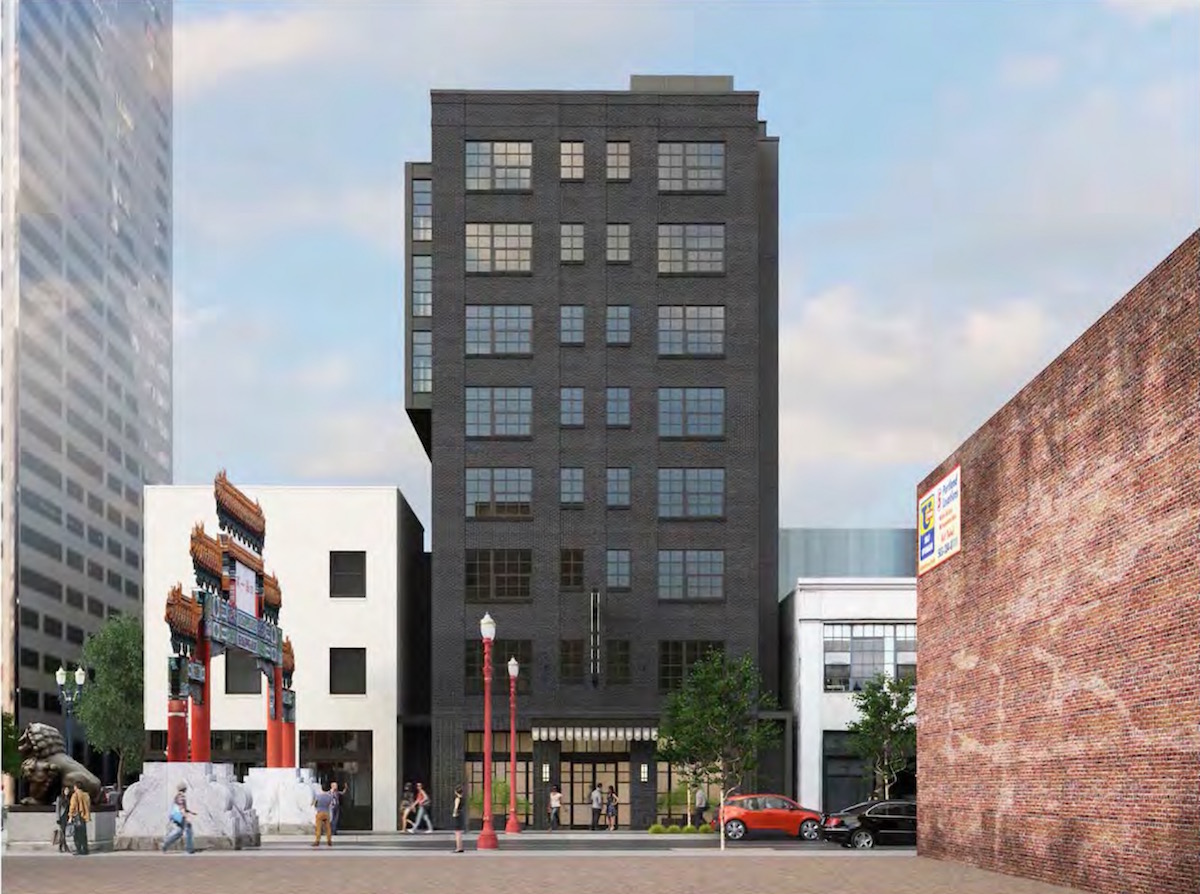
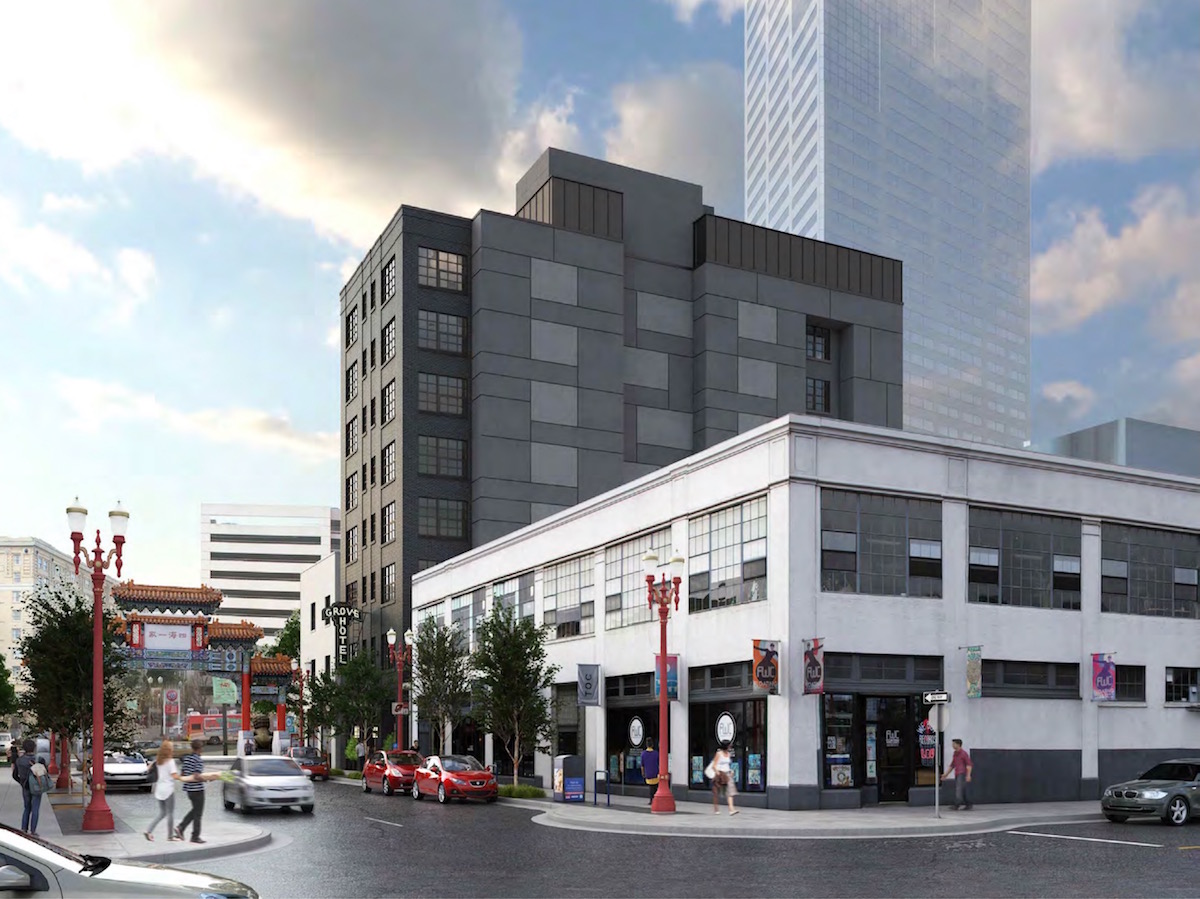
Changes made during the Historic Resource Review process include reducing the height of the north side of the stairwell enclosure, eliminating the 4 foot tall mechanical screen on the rooftop in an effort to reduce the apparent scale of the proposal, modifying the stucco pattern on the north elevation and adding painted scrolled trim to the transoms at the storefront windows on the facade facing W Burnside.
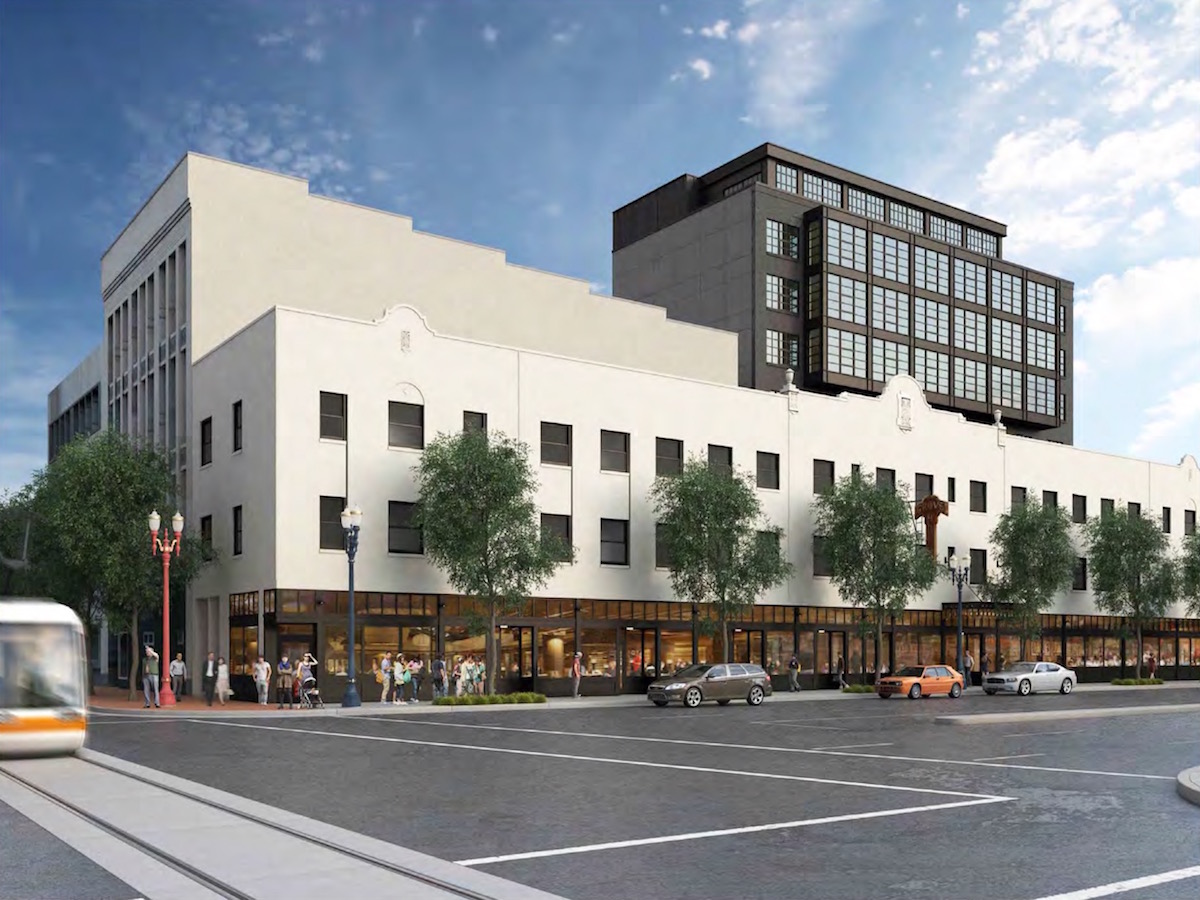
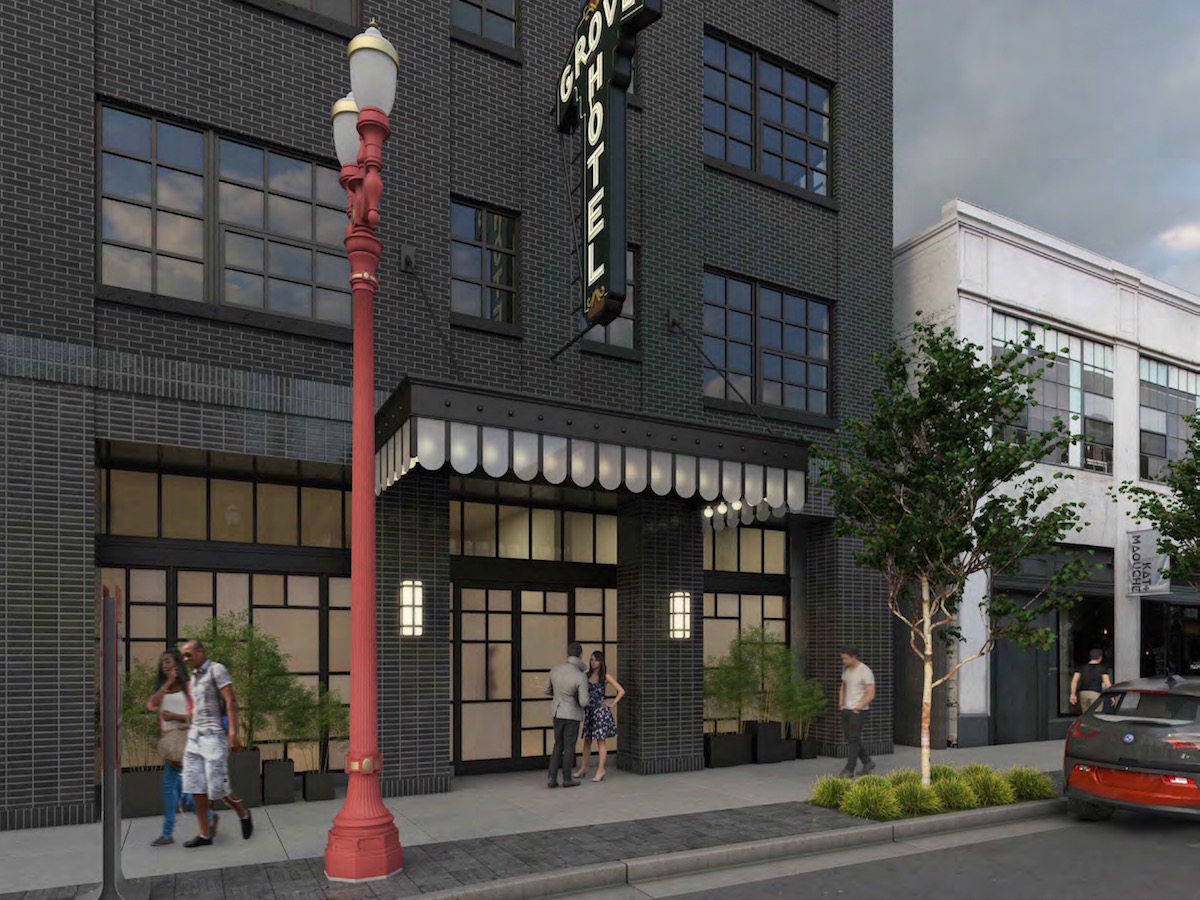
The Grove Hotel went before the Historic Landmarks Commission four times in total: once for Design Advice in May 2015; and for Design Review hearings in September, October and November 2015. During the Design Review process seven letters of support were received, including from the AIA Portland Historic Resources Committee, the Old Town Chinatown Community Association, academic Randy Gragg, developer and former Landmarks Commissioner John Russell, and from Chinatown business ‘Table of Contents’. Two letters of concern were received, from the State Historic Preservation Office and from the Advocacy Committee of the Architectural Heritage Center.
At the first and second Design Review hearings a number of commissioners had strong concerns about the height of the building, which maxes out the 100′ height limit for the site. At the final Design Review hearing, held on November 9th, the Commission weighed the pro and cons of the project. Speaking against it was Commissioner Engeman, whose concerns about the height remained:
I’m still at the same place with the height. I think it’s too tall, it’s unprecedented based on other conversations and projects that we’ve approved in other districts. I think for the scale of buildings around it, and other infill projects that have been approved in the district that this is really pushing the limit, especially given that it’s a mid-block infill, which I think is different than a corner block or a half block… I think definitely it’s going to open the door to, you know, larger development in Chinatown. So when it comes time to work on our Design Guidelines, I mean all of this is definitely going to set the tone for the district moving forward. But I understand I’m in the minority position.
Speaking in favor of the project was then Commission Chair Emerick:
I see the challenges, which have been represented in the neighborhood and on the Commission, but on the whole I feel the benefits outweigh those challenges. I think it’s going to be a high quality building. It’s restoring a historic resource, which otherwise is in a pretty challenging state: including a seismic upgrade; restoring the historic frontage on Burnside, which really is a gateway to the district, and it’s inactive and derelict right now. I think that the building… personally I think that’s it’s not going to appear too big, but we’ll see.
Commissioners Engeman and Ranzetta voted against the project, while Commissioners Dao, Emerick and Solimano voted to adopt the Staff Report [PDF] and approve the project.
Selective demolition and construction of the Grove Hotel expansion began in May 2016.
Plans, Elevations and Sections
- Plan – Vicinity
- Plan – Site
- Plan – Basement
- Plan – Ground
- Plan – Level 2
- Plan – Level 3
- Plan – Levels 4-5
- Plan – Levels 6-8, 9
- Elevation – South
- Elevation – East and West
- Elevation – North
- Section
- Section
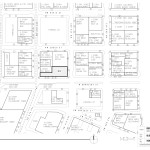
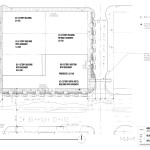
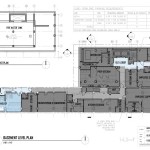
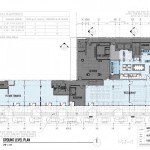
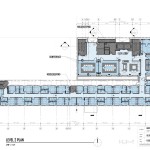
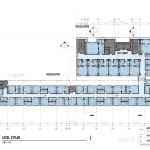
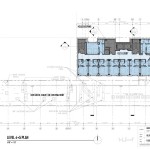
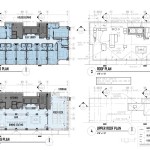
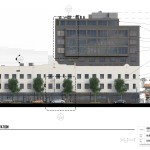
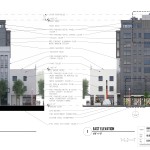
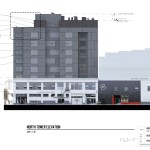
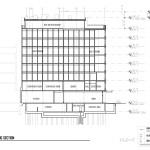
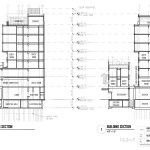
Commissioner Engeman is way out of touch here. When she talks about the “scale of the buildings around it” she seems to be ignoring the fact that the Grove Hotel sits across the street from the tallest building in the city.
2nd tallest. Tallest is Wells Fargo Center at ‘546.
Great architecture, thanks for the info.